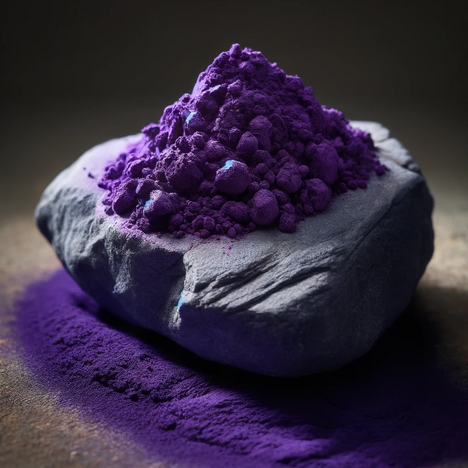Crystal violet

What is crystal violet?
Crystal violet, chemically known as hexamethyl-p-rosaniline chloride, is a synthetic dye with antimicrobial properties. Originally used in the textile industry and as a biological dye, its application has been extended to medical and veterinary practice due to its ability to combat certain bacteria, fungi and protozoa. Crystal violet is applied in diluted form and can be helpful for a number of dermatological problems.
Benefits of crystal violet for dogs
Combating fungal infections
One of the main benefits of crystal violet is its effectiveness in treating fungal infections, particularly yeast infections of the skin and ears in dogs. Its antifungal properties can help inhibit the growth of fungi and promote healing.
Disinfectant effect
Crystal violet has a disinfectant effect and can be used to clean wounds or cuts to prevent infection. It is particularly useful in cases where conventional antiseptics may not be available or suitable.
Cost effective treatment
Compared to newer antifungals and antibiotics, crystal violet is a cost-effective option for treating infections. This makes it an accessible choice for pet owners looking for an effective treatment without incurring high costs.
Disadvantages and potential risks
Toxicity if ingested
One of the biggest disadvantages of crystal violet is its toxicity if ingested. It can cause vomiting, diarrhea and, in severe cases, damage to internal organs in dogs. Therefore, extreme caution is advised when using it in areas that the dog may lick.
Skin irritation
Although Crystal Violet is generally safe for topical use, it may cause skin irritation or allergic reactions in some dogs. A small skin test should be performed prior to application to determine possible sensitivity.
Long-term safety concerns
Studies have shown that crystal violet may be potentially carcinogenic with long-term or frequent use. Although the risk from topical application is considered low, use should be limited to the minimum duration necessary.
Use with caution
Crystal violet can be an effective treatment option for various skin and fungal infections in dogs, but its use requires caution. The potential benefits must be weighed against the risks, especially in terms of toxicity and the possibility of skin irritation. When caring for our dogs, it is always best to err on the side of safety and make informed decisions.
If you notice any signs of hypersensitivity or poisoning in your dog, you should see your vet immediately. We are not a substitute for a vet, but we try to be as accurate as possible. Every dog reacts differently and we recommend you get a second opinion or consult your vet if in doubt.
Stay healthy and take good care of your four-legged friend!😊